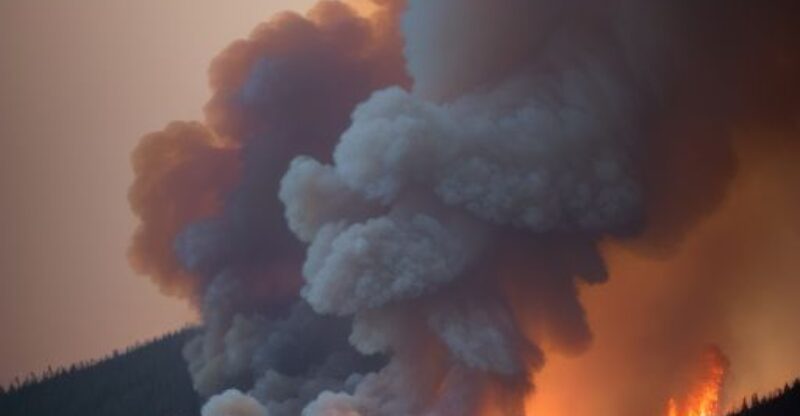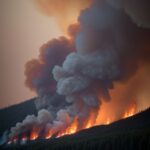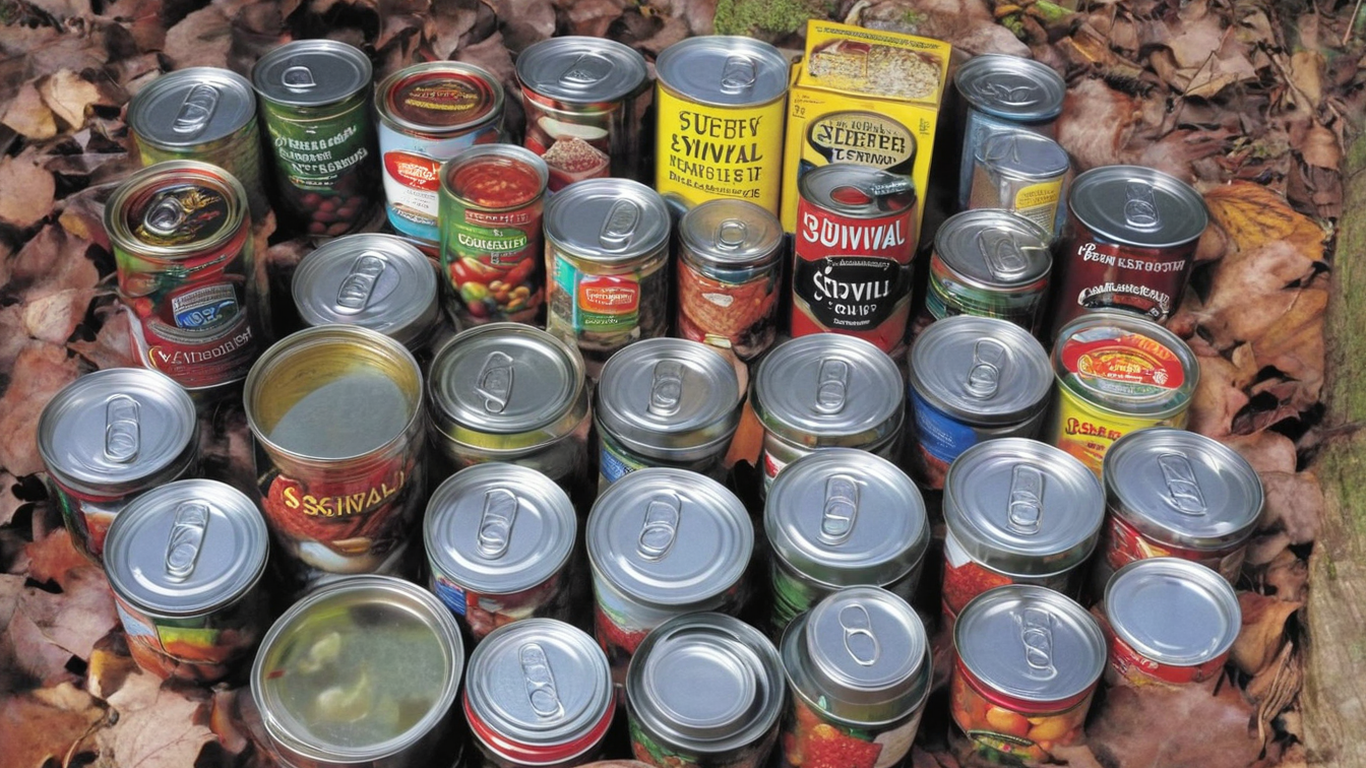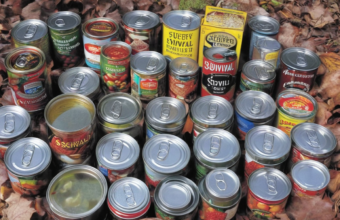How to Survive a Wild Fire – A Comprehensive Guide to Safety
Wildfires can be unpredictable, volatile, and incredibly dangerous. Understanding the right survival strategies is not just important, but crucial. This guide is designed to equip you with the knowledge and tactics necessary to increase your odds of survival when faced with a wildfire.
We’ll delve into the essentials of wildfire safety, from understanding how wildfires behave to practical steps for protecting yourself and your loved ones. We’ll also explore the importance of emergency preparedness, the role of protective clothing, and how to react when faced with a rapidly advancing fire.
This is more than just a guide; it’s a survival kit packed with valuable information, designed to empower you. As we traverse this critical topic, remember, knowledge is power – and in the face of a wildfire, it could be your lifeline.
What are wildfires?
Wildfires, also known as forest fires, are uncontrolled fires that rapidly spread across vegetation and forest areas. They often start small, usually from a natural cause like lightning, or human activities like campfires and discarded cigarettes. Conditions such as dry weather, strong winds, and abundant fuel from dead or dry vegetation can exacerbate these fires, making them highly destructive.
Wildfires are a natural part of many ecosystems, playing a crucial role in the regeneration of certain plant species. However, they also pose significant risks to human life, property, and the environment. They can destroy homes, infrastructure, and valuable natural resources, and can contribute to climate change by releasing large amounts of carbon dioxide into the atmosphere.
Surviving a wildfire requires knowledge and preparation. Here are some key strategies:
- Evacuation planning: Know your evacuation routes and have a family communication plan in place.
- Emergency supplies: Keep a disaster supply kit ready.
Understanding the nature of wildfires is crucial for effective disaster management and survival. By knowing what wildfires are, we can better prepare for, respond to, and recover from these potentially catastrophic events.
“How do wildfires start?”
Wildfires, also known as forest fires, are typically sparked by a combination of hot and dry conditions and the presence of a heat source. This heat source can be natural, like a lightning strike, or human-induced, such as a discarded cigarette or unattended campfire. Once ignited, the fire spreads across vegetation, feeding off the dry leaves, grass, and trees.
The speed and intensity of wildfires are influenced by wind speed and direction, topography, and the type and amount of vegetation present. Strong winds can push the fire across large areas quickly, while slopes and hills can accelerate the fire’s spread, as heat rises. Dense vegetation provides ample fuel for the fire, allowing it to grow and spread rapidly.
Understanding how wildfires start is essential in taking steps to prevent them and knowing how to survive if one occurs. This includes maintaining a safe distance from active fires, staying updated with local news and weather reports, and having an evacuation plan in place. It’s also important to remember that wildfires can start and spread quickly, so immediate action is often necessary for survival.
When it comes to surviving a wildfire, preparedness is key. This includes creating a defensible space around your home, using fire-resistant materials in construction, and having an emergency supply kit ready.
What to do during a wildfire?
When a wildfire strikes, your primary goal is to ensure your safety and that of those around you. Evacuation is often the best course of action. Always heed the advice of local officials and evacuate promptly if ordered to do so. Be sure to have a wildfire survival plan in place, which includes knowing your evacuation routes and having a packed emergency kit.
- Emergency Kit: Your kit should include essential items such as water, non-perishable food, medications, important documents, and a battery-powered radio.
While evacuating, wear protective clothing that covers your entire body, including sturdy shoes, long pants, and a long-sleeved shirt. This can help protect you from flying embers.
In the unfortunate event that you’re unable to evacuate and are trapped by the wildfire, seek shelter in a structure or a cleared area. Close all windows and doors, but leave them unlocked. Stay away from exterior walls and windows, and keep yourself low to the ground to avoid inhaling smoke.
After the wildfire, wait for the all-clear from local authorities before returning home. Be cautious of hazards such as hot spots and fallen power lines. Remember, surviving a wildfire doesn’t end when the flames are extinguished. The aftermath can be just as dangerous. Always stay updated with the latest information from trusted sources to ensure your safety during and after a wildfire.
“How to prepare for a wildfire?”
The first step in preparing for a wildfire is to create a defensible space around your home. This involves removing dead plants, grass, and weeds within 30 feet of your home. Trees should be pruned to a height of 6 feet, and the distance between trees and shrubs should be increased to reduce the risk of fire spreading.
Next, it’s crucial to create an emergency plan and practice it regularly. This plan should include evacuation routes, a designated meeting place, and a list of important items to take with you. Remember to include pets in your plans.
One often overlooked aspect of wildfire preparation is emergency supply kits. These kits should contain first aid supplies, N95 respirator masks, medications, three days’ worth of non-perishable food and water, and important documents.
Finally, sign up for local alerts and warnings. Many communities have systems that will send instant text alerts or emails about wildfires and other emergencies.
- Create a defensible space
- Create an emergency plan
- Prepare emergency supply kits
- Sign up for local alerts
Remember, preparation is key when it comes to surviving a wildfire. The more you prepare, the better your chances of keeping your family and property safe.
What to pack in a wildfire survival kit?
In the face of a wildfire, preparedness is crucial. One of the primary things you need is a well-stocked wildfire survival kit. Your kit should include essential items like a first aid kit, which can address minor injuries and stabilize serious ones until professional help arrives.
It’s also critical to include emergency food and water. Non-perishable food items, such as canned goods and energy bars, are ideal, and you should have at least one gallon of water per person per day.
Protective clothing is another must-have. This includes long-sleeved shirts, long pants, sturdy boots, and a bandana or mask to protect your lungs from smoke inhalation.
In addition, carry important documents like identification, insurance policies, and medical records in a waterproof and fireproof container.
Don’t forget about communication and navigation tools. A battery-powered or hand-crank radio can provide vital information, and a fully charged cell phone with a backup power source can help maintain contact with the outside world. A compass and local maps can be invaluable if you need to evacuate quickly.
Lastly, include items for light and warmth, such as flashlights with extra batteries, waterproof matches, and emergency blankets.
Remember, the key to surviving a wildfire is preparedness. Your survival kit should be packed and ready to go at all times during wildfire season.
“How to protect your home from wildfires?”
The first step in protecting your home from wildfires is creating a defensible space around your property. This involves removing dead plants, grass, and weeds within 30 feet of your home. Trees should be pruned to a height of at least six feet.
Another critical step is to use fire-resistant materials when building or renovating your home. This includes using fire-resistant roofing materials and installing dual-paned windows.
It’s also essential to prepare for emergency evacuations. This involves creating an emergency plan, packing a go-bag with essential items, and knowing multiple evacuation routes from your home.
• Keep your gutters, roofs, and eaves clear of debris. This can prevent embers from igniting your home.
• Install ember-resistant vents. These vents can prevent embers from entering your home.
• Use fire-resistant plants in your landscaping. These plants are less likely to ignite.
• Store firewood at least 30 feet away from your home. This can prevent a fire from spreading to your house.
Remember, the key to surviving a wildfire is preparation. By creating a defensible space, using fire-resistant materials, and preparing for emergency evacuations, you can significantly increase your chances of protecting your home from wildfires.
“What to do after a wildfire?”
Wildfires can be devastating, leaving a trail of destruction in their path. Once the fire has been extinguished, it’s crucial to know the next steps to take. First, wait for the all-clear from local authorities before returning to your property. Safety is paramount, as the area may still be hazardous due to hot spots, fallen trees, and damaged infrastructure.
Upon returning, assess the damage to your property. Document everything for insurance purposes, taking photos and making a detailed inventory of lost or damaged items. Reach out to your insurance company as soon as possible to initiate the claims process.
Remember to wear protective clothing, including a respirator, gloves, and sturdy shoes, when sifting through the debris. Be aware of potential hazards such as sharp objects, exposed wires, and unstable structures.
Contact your local health department for information on food and water safety. Wildfires can contaminate water supplies and make stored food unsafe to eat.
Recovering from a wildfire can be emotionally taxing. Don’t hesitate to seek help from community resources, mental health professionals, and support groups.
Lastly, consider implementing wildfire mitigation strategies to reduce the risk of future fires. This could include creating defensible space around your home, using fire-resistant landscaping, and installing fire-resistant roofing and siding.
Remember, there’s no rush to rebuild. Take the time to plan and make decisions that will ensure your safety and the resilience of your property in the future.
“Are there safe places during a wildfire?”
In the face of a wildfire, finding a safe place is paramount. While no place can guarantee absolute safety, some locations offer a higher chance of survival. One such place is a designated emergency shelter. These facilities are usually set up by local authorities in response to wildfire threats and are equipped to protect evacuees from the fire and smoke.
Another possible safe place is a body of water. Large bodies of water such as lakes or rivers can serve as a natural barrier against wildfires. However, it’s important to note that smoke and heat can still pose significant risks, so this should only be considered as a last resort.
In the absence of these options, look for open areas with minimal vegetation. Wildfires need fuel to spread, so areas devoid of trees, shrubs, and grass can provide some level of safety.
- Emergency Shelters
- Bodies of Water
- Open Areas with Minimal Vegetation
Staying informed about the wildfire’s progression is crucial. Utilize local news sources, emergency broadcasts, and apps like Red Cross Emergency to stay updated. Always follow the instructions of emergency personnel and evacuate when advised to do so.
Remember, your first priority during a wildfire should be to get to safety. Material possessions can be replaced, but lives cannot.
Conclusion: Surviving a Wildfire
In conclusion, understanding how to survive a wildfire is crucial for anyone living in fire-prone areas. We’ve explored the nature of wildfires, their causes, and the necessary steps to take during an event. Preparation is key, as we’ve learned, with an emphasis on creating a wildfire survival kit and protecting your home.
The importance of knowing what to do after a wildfire has also been highlighted, including the identification of safe places during a wildfire. These topics are not only vital for personal safety but also for the preservation of property and the environment.
The information provided in this post is not only relevant today but will continue to be in the future. As climate change progresses, wildfires may become more frequent and intense. Therefore, staying informed and prepared is more important than ever.
Remember, the key to surviving a wildfire is preparation, awareness, and swift action. Don’t wait for a wildfire to start to create a plan. Start now, and ensure you and your family are safe should the worst happen. Keep an eye on future developments and trends in wildfire management and safety, as these could be life-saving.













